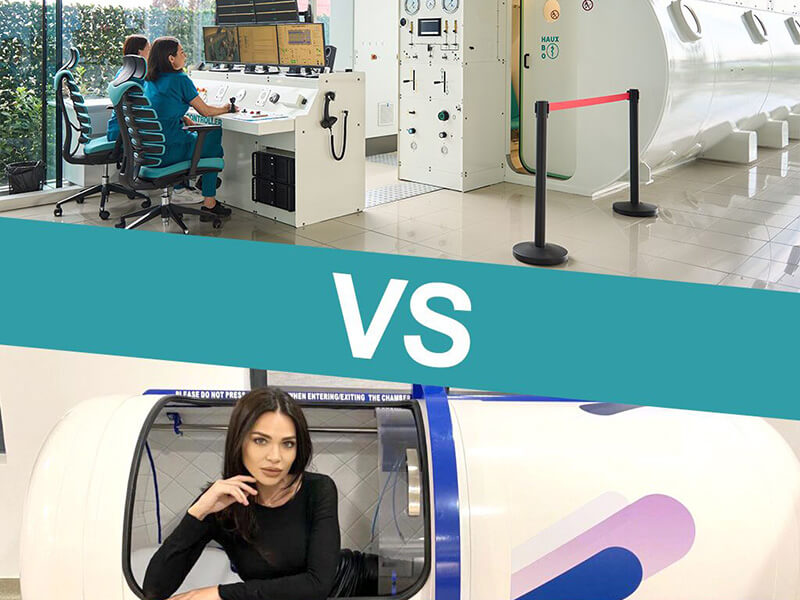
Article reviewed by: Dr. Sturz Ciprian, Dr. Tîlvescu Cătălin and Dr. Alina Vasile
HBOT improves cardiovascular endurance for athletes
Cardiovascular endurance is an important aspect of being fit, especially for athletes. It is an indicator of the good functioning of the circulatory and respiratory system, more precisely how well the body was oxygenated during physical activity.
In other words, the more oxygen is used, the better the cardiovascular and respiratory systems work. Thus, hyperbaric oxygen therapy (HBOT) has become more and more requested by athletes, because in addition to treating injuries and shortening recovery time after an injury, it also improves cardiovascular endurance .
Exposure of athletes to pure oxygen, at elevated pressures, in a special hyperbaric therapy chamber, contributes to an improvement of cardiovascular endurance. And good cardiovascular endurance means better heart function, balanced breathing and a reduced risk of heart disease and stroke.
Here's how HBOT influences cardiovascular endurance:
Increases tissue oxygenation: HBOT delivers more oxygen to cells, including muscle and heart cells. This contributes to improving sports performance and reducing muscle fatigue.
Improves endothelial function: HBOT has a positive effect on endothelial function, which is responsible for the dilation and constriction of blood vessels. This contributes to maintaining blood pressure within normal limits and reducing the risk of developing cardiovascular diseases.
Increases capillary density: Hyperbaric oxygenation allows increasing the amount of oxygen transported to a tissue, which leads to increased capillary density in the process of angioneogenesis (formation of new vessels). And a dense network of capillaries allows increased oxygenation of the locomotor system and contributes to the increase in performance and endurance of athletes.
Accelerate recovery: Athletes can use HBOT to speed up the recovery process after intense training or competition. The extra oxygen helps reduce inflammation and pain, allowing athletes to train more effectively.
Provides resistance to hypoxia: Athletes who train at high altitudes or participate in sports that involve exposure to hypoxia can benefit from training under increased pressure in a hyperbaric chamber. This contributes to increased tolerance to hypoxia and improves performance in such conditions.
HBOT improves physical performance
During 2018 – 2020, a randomized study was conducted, double-blind, placebo-controlled, within the Shamir Medical Center in Israel, and registered in the clinical trial registry of the National Institutes of Health (NIH).
The study enrolled 37 athletes, aged between 40 and 50 years, who performed aerobic sports at least four times a week at moderate-high performance for their age group, without muscle injuries. significant skeletal in the last 3 months.
The athletes were exposed to 40 repeated sessions of HBOT, 5 sessions per week, breathing 100% oxygen for one hour.
Of the 37 athletes, 31 were included in this study, 16 of them for hyperbaric oxygen therapy and 15 for SHAM therapy.
The study indicated that HBOT improved physical performance in healthy performance athletes. Major improvements include maximum oxygen consumption, power and anaerobic threshold. Using muscle biopsies, hyperbaric oxygen therapy has been shown to significantly improve mitochondrial respiration and increase mitochondrial mass.
Hyperbaric oxygenation helps professional and amateur athletes to be ready for any competition, greatly increasing performance. This is because hyperbaric oxygenation intensifies blood circulation and tissue oxygenation.
For example, high oxygen levels help athletes increase their performance, recover faster from exercise and improve their cardiovascular endurance.
Hyperbaric oxygen therapy should be administered under the close supervision of a specialist physician and in an appropriately equipped medical facility.
Appointments for hyperbaric oxygen therapy can be made here.
Bibliography:
https://sportsmedicine-open.springeropen.com/articles/10.1186/s40798-021-00403-w
https://www.em-consulte.com/article/28079/les-effets-d-une-exposition-repetee-a-l-oxygene-hy




